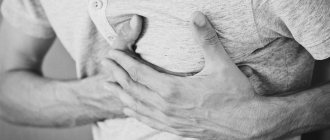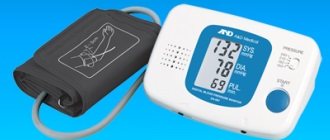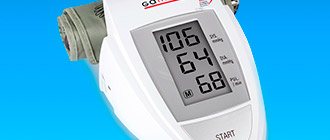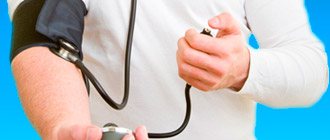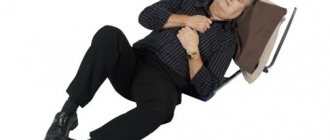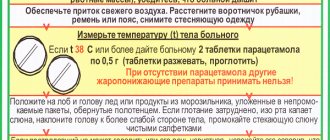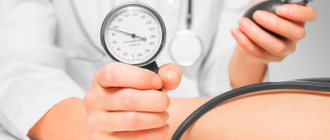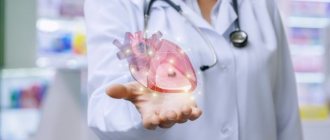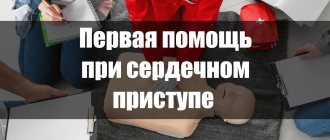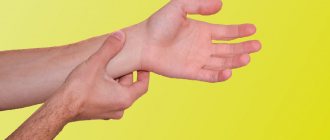Cardiac arrest: Pixabay The most common cause of death worldwide is cardiac arrest. The condition develops instantly, the outcome is determined in a matter of minutes. The vital activity of the body can prolong first aid in case of cardiac arrest. How to understand that a person needs help and what to do in case of cardiac arrest before medical personnel arrive, read on.
First aid for cardiac arrest: algorithm
Cardiac arrest may occur due to heart disease or an accident. To minimize the risk of its occurrence, we do not recommend treating heart disease on your own. Be sure to visit a doctor who will give professional recommendations after analyzing your health condition.
Most cardiac arrest occurs suddenly and outside of medical facilities. This is a condition in which blood circulation stops and oxygen does not enter the body. According to experts, resuscitation measures taken in the first 3-5 minutes increase the chances of survival.
How to determine that a person needs emergency help? When the heart stops, the following symptoms occur:
- The victim is unconscious.
- Does not breathe or inhales spasmodically and rarely.
- There is no pulse. Feel it in the area of the carotid artery.
There is no more than ten seconds for diagnosis. If it is determined that the victim has suffered cardiac arrest, first aid is provided immediately.
First aid for cardiac arrest: Nur.kz
PMP for cardiac arrest involves the following steps:
- Call an ambulance. Indicate the gender and approximate age of the victim, report that the pulse and breathing have stopped.
- Place the person on their back on a flat, hard surface. It is better for your legs to be elevated - this will ensure blood flow from the lower part of the body.
- Unbutton or tear the clothes on your chest and begin resuscitation. Do not waste time completely undressing the victim: emergency resuscitation is needed as soon as possible.
Resuscitation in case of cardiac arrest involves indirect massage performed simultaneously with artificial respiration. It is advisable that you have an assistant: then you can change periodically and the actions will be performed more efficiently.
After the heartbeat, breathing and consciousness are restored, if the patient has medications prescribed by the doctor, help him take them. However, these products can be both beneficial and harmful to health. We recommend not to resort to self-medication, but to wait for qualified help.
Fall asleep and not wake up. Why do tragedies happen in dreams?
Cardiovascular diseases are the scourge of modern society. In world statistics, this is the most common cause of death. In Russia alone, about two hundred thousand people a year die from sudden cardiac arrest. The most difficult thing to comprehend is the loss if the person felt well the day before, but did not wake up in the morning.
We talked about the causes of the tragedy and ways to prevent it with cardiologist Tatyana Mikhailovna Kolomeytseva.
— Tatyana Mikhailovna, what can cause a person’s heart to suddenly stop?
As a rule, this is a consequence of existing diseases: coronary heart disease, hereditary cardiomyopathies, congenital heart defects and conduction system. The cause is also thrombosis, spasm of the coronary vessels.
In Russia alone, about two hundred thousand people a year die from sudden cardiac arrest.
— Can a tragedy happen to an absolutely healthy person whose cardiovascular system has never failed?
An absolutely healthy person is not at risk of dying from a heart attack. However, heart disease (in particular, coronary artery disease) can be asymptomatic. In this case, the tragedy becomes the result of an undiagnosed pathology.
“Chronic heart failure (one of the forms of coronary artery disease) is present in 7% of the country’s population.” Quote from the material: “Coronary heart disease: diagnosis and treatment”
— People who are far from medicine associate heart disease with stress or physical activity. But in a dream a person is absolutely calm. Are there any risk factors specific to sleep?
No. The dangers come from the pathologies already listed: both in sleep and while awake.
— Could sleep quality indicate an increased risk of sudden death?
Obstructive sleep apnea is especially dangerous. Its main manifestation is snoring. A person suffering from apnea often does not get enough sleep, does not have time to regain strength during the night, suffers from drowsiness during the daytime, and is also susceptible to increased blood pressure upon awakening.
— Diseases not directly related to the cardiovascular system can become an additional risk factor?
Of course they can. These conditions include diabetes mellitus, obesity, kidney pathology and neurological diseases.
— What age is the most dangerous for cardiac arrest?
The incidence of cardiac disorders increases with age. Therefore, the older the person, the higher the risk.
- When should you be wary? Are there symptoms that allow us to foresee such a dangerous condition in advance?
Warning signs may appear two weeks before cardiac arrest. These are fatigue, shortness of breath, arrhythmia. The most threatening symptom is fainting. They cannot be ignored.
The most threatening symptom is fainting. They can't be ignored
Statistics show that in three out of four cases sudden death was preceded by corresponding symptoms. Therefore, it is important to pay attention to your well-being.
— Not everyone is used to taking care of their health. When a person himself does not talk about his health, can loved ones guess that help is needed? What external manifestations should cause alarm?
From the outside, it is more difficult to predict the impending disaster. But if a person suddenly reduces the pace of activity and cannot cope with his usual workload, this is an alarming symptom. Gait slows down and endurance decreases. It is worth consulting a doctor if your friend or relative does not keep up with you while walking, although you are walking at the speed that is usual for both of you.
Another noticeable symptom is snoring. This is a marker of obstructive apnea.
— Can genetic tests help identify predisposition to heart disease?
Only in the case of hereditary cardiomyopathies. It is not the leading cause of sudden cardiac death. It occupies no more than 20% of the total. To judge the hereditary nature of cardiomyopathy, it is necessary to examine three generations of the same family.
“The main danger is the possibility of sudden cardiac arrest. Therefore, patients with new-onset atrial fibrillation are immediately hospitalized.” Quote from the material “Recognizing the enemy of the heart. What is arrhythmia?
— Recently, fitness bracelets have become widespread. They are worn to control their motor activity. How accurately do they measure the pulse and can they help suspect problems in the cardiovascular system?
It is impossible to talk about fitness bracelets as a full-fledged diagnostic tool. They only measure the pulse, this is not enough to make final conclusions. But they can warn of impending danger. You should be wary if the bracelet detects rhythm disturbances. Simpler models for arrhythmia may simply malfunction - this is also a reason to see a doctor.
“The symmetry of the pulse is affected by a decrease in the lumen of one of the arteries, its incorrect location.” Quote from the material “What should an adult’s pulse be: normal and pathological”
— If cardiac arrest does occur in a dream, can the person be helped somehow?
Most often in this case the person is left without help because there are no witnesses. But if you managed to notice it in time, you need to call an ambulance as quickly as possible.
- What is dangerous for our heart? How to reduce the risk of cardiovascular diseases?
The cardiovascular system suffers from bad habits (in particular, smoking) and chronic emotional overload. Poor nutrition also poses a danger: irregular, with a lot of fat.
To preserve your heart, you need to lead a healthy lifestyle. Give yourself feasible and regular physical activity.
If cardiac pathologies have already been detected, it is important to regularly visit a doctor and follow all recommendations.
“If it was not possible to prevent the tragedy, people can only hope that their loved one at least did not experience pain and fear.” But is there any reason for such hope?
Of course, no research has been done. But it is known that with fatal arrhythmias, consciousness fades very quickly. The parts of the brain responsible for the perception of pain do not function. Therefore, a person does not experience torment.
Other materials on topics:
How to keep your heart healthy?
Serious question: what happens to the heart during an angina attack?
Heart, why don't you want peace? What causes tachycardia?
For reference:
Kolomeytseva Tatyana Mikhailovna
In 2008 she graduated from the Moscow Medical Academy named after. THEM. Sechenov with a degree in medical and preventive care.
In 2009 – professional retraining at the Moscow Medical Academy named after. THEM. Sechenov with a degree in General Medicine. He has professional retraining at the Russian State Medical University of Roszdrav in the specialty “Cardiology”. Completed professional development on the topic “Pulmonary hypertension: clinical workshop” at the European Health Center in Otwock (Poland)
In 2015 – advanced training at the National Medical and Chemical Center named after. N.I. Pirogov “Anticoagulants for atrial fibrillation.” In 2021 – professional development on the topic “Complex issues in the diagnosis and treatment of pulmonary hypertension” on the basis of the RKNPK named after. Myasnikova
In 2017-2018 – advanced training at the First Moscow State Medical University named after. THEM. Sechenov “Modern aspects of diagnosis and treatment of chronic heart failure.”
Member of the Russian Society of Cardiologists.
Has a certificate of a specialist in the specialties “Therapy”, “Cardiology”
Currently working as a cardiologist at Clinic Expert Tula LLC. Receives at the address: st. Boldina, 74
Cardiac arrest: chest compressions
Indirect cardiac massage (compression) helps restore blood circulation. According to research, massage can save a person even without the use of artificial respiration. However, to achieve the desired result, you need to follow the correct technique:
- Kneel to the side of the victim. Place one palm on the lower third of his sternum, the second on top of the first. Raise your fingers so they don't touch your body.
- Your arms should be straight, not bent at the elbows. Their correct position relative to the victim’s body is perpendicular.
- It is important to remember how often you need to massage your heart. Do 100 chest compressions per minute.
- During compression, the patient's chest should bend by about a third: in adults - by 5-6 centimeters, in children - by 4-5.
- For every two breaths, perform 30 chest compressions.
We recommend combining indirect cardiac massage with artificial respiration. I’ll tell you more about the technique for doing it later.
Indirect cardiac massage: Piqsels
Consequences and complications
Against the background of cardiac arrest, even in cases of effective emergency therapy, in the medium term the development of ischemic damage to the brain, kidneys, liver and other organs is possible. There is a high risk of developing complications due to improper technique of cardiopulmonary resuscitation in the form of rib fractures at their connection to the sternum/midclavicular line. In this case, pinpoint hemorrhages may occur, merging into foci on the anterior/posterior surface of the heart in places where the heart is compressed by the sternum and spine.
How many people survive clinical death safely?
It may seem that most people who find themselves in a state of clinical death come out of it safely. However, this is not the case; only three to four percent of patients can be resuscitated, after which they return to normal life and do not suffer from any mental disorders or loss of body functions.
Another six to seven percent of patients, being resuscitated, nevertheless do not fully recover and suffer from various brain lesions. The vast majority of patients die.
These sad statistics are largely due to two reasons. The first of them is that clinical death can occur not under the supervision of doctors, but, for example, at the dacha, from where the nearest hospital is at least half an hour’s drive. In this case, doctors will arrive when it is no longer possible to save the person. Sometimes it is impossible to defibrillate in a timely manner when ventricular fibrillation occurs.
"Special Report": Beyond
The second reason remains the nature of the damage to the body during clinical death. If we are talking about massive blood loss, resuscitation measures are almost always unsuccessful. The same applies to critical myocardial damage during a heart attack.
For example, if a person has more than 40 percent of the myocardium affected as a result of blockage of one of the coronary arteries, death is inevitable, because the body cannot live without heart muscles, no matter what resuscitation measures are taken.
Thus, it is possible to increase survival rate in case of clinical death mainly by equipping crowded places with defibrillators, as well as by organizing flying ambulance teams in hard-to-reach areas.
